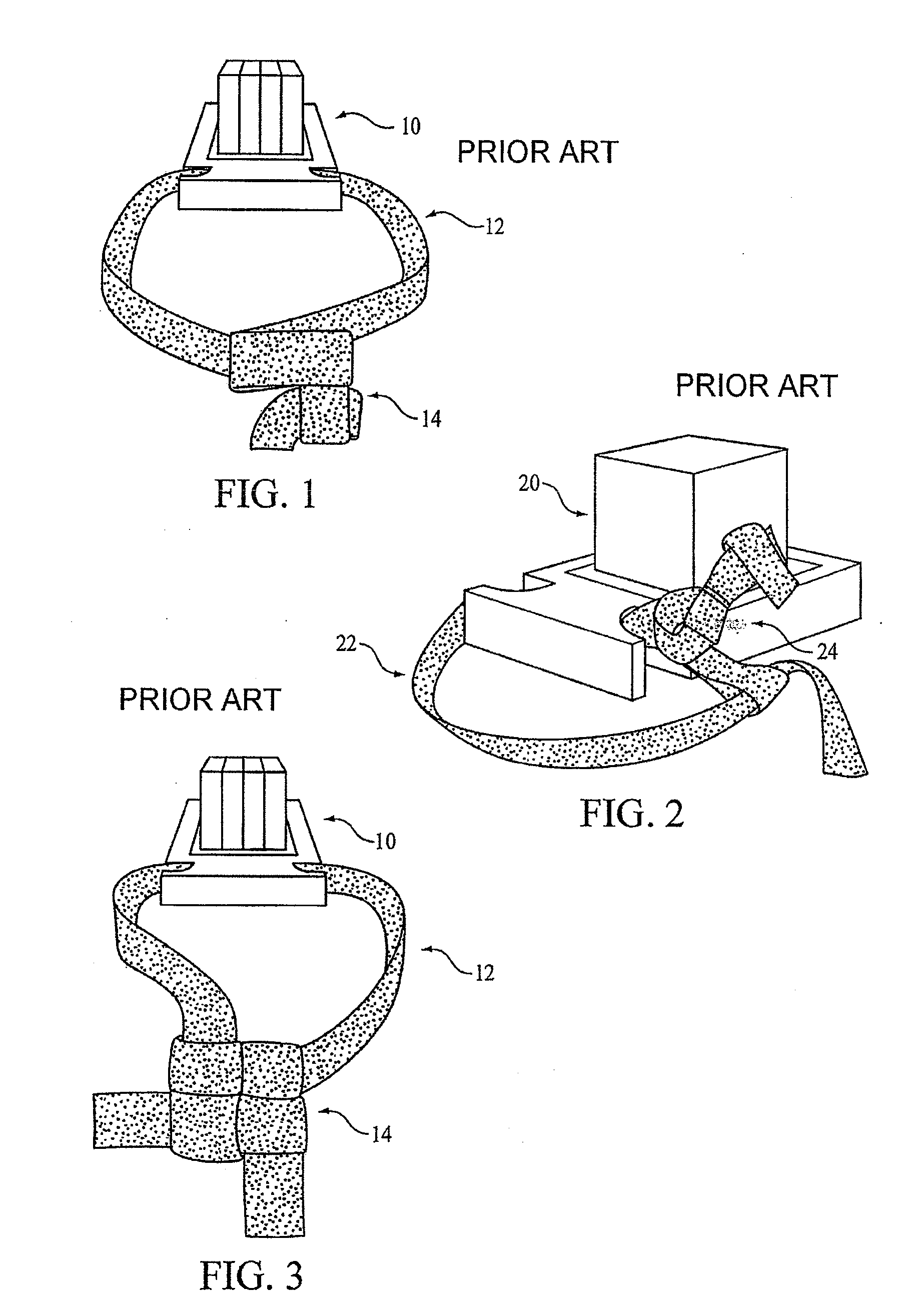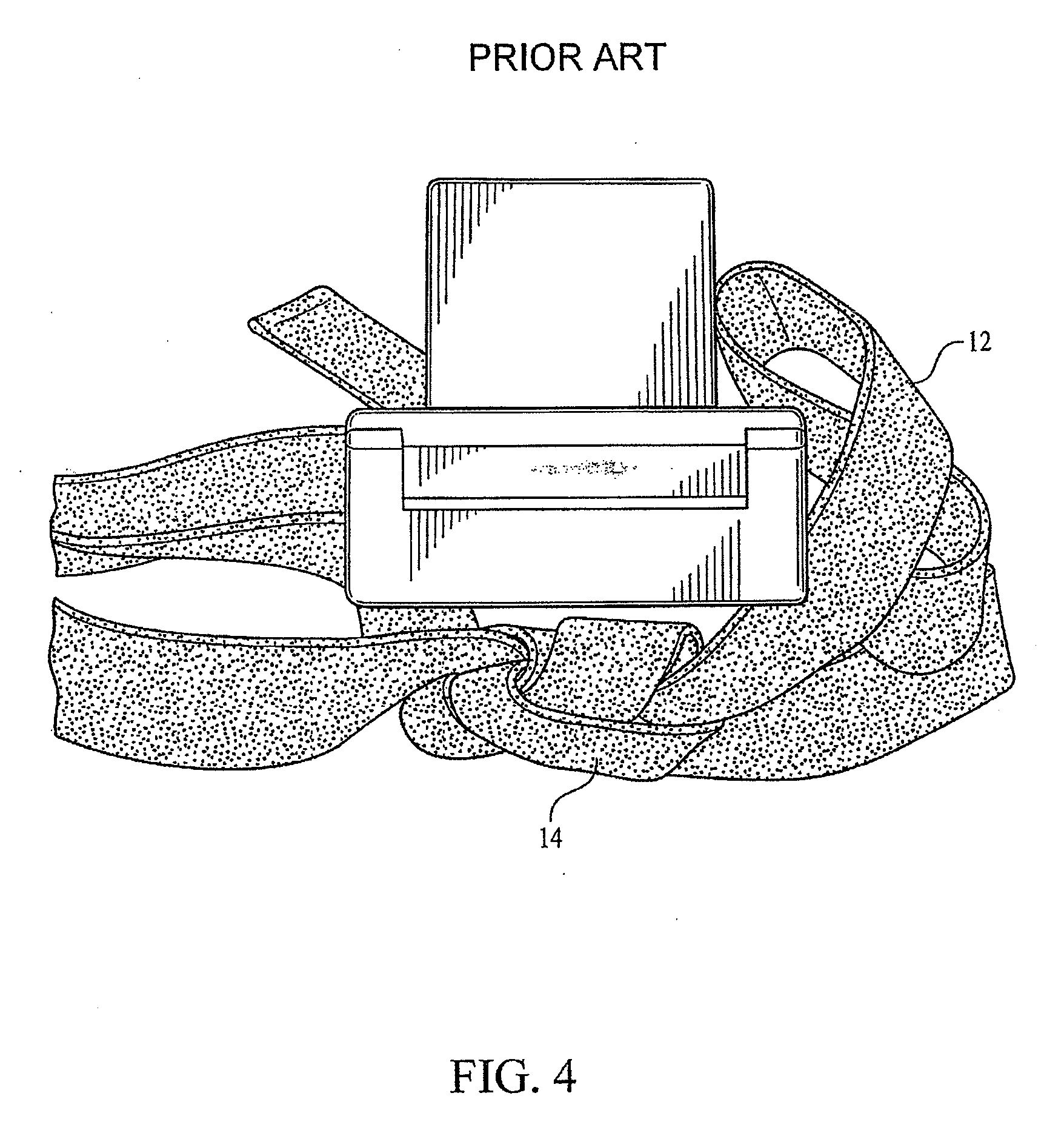Protective covers for phylacteries
a protective cover and phylacterie technology, applied in the field of protective covers for phylacteries, can solve the problems of insufficient ledge formed by the protective cover to adequately support the entire knot, inability to securely wrap around the sides of the protective cover, and long strap b>22/b>
- Summary
- Abstract
- Description
- Claims
- Application Information
AI Technical Summary
Benefits of technology
Problems solved by technology
Method used
Image
Examples
Embodiment Construction
[0033]Referring to the accompanying drawings wherein the same reference numerals refer to the same or similar elements, FIGS. 5-11 which show a protective cover intended for primary use for a head Phylactery which is designated generally as 30. Each protective cover 30 comprises an upper shell member 34 and a lower shell member 36 which in combination, define a hollow interior contoured to fit the head Phylactery. The box 10 of the head Phylactery fits inside this hollow interior and therefore the upper shell member 34 includes a generally cube-shaped portion 38, i.e., it has the same shape as the Phylactery box 10. The upper shell member 34 also includes a substantially planar lower surface 40 which surrounds the cube-shaped portion 38. This lower surface 40 is not rectangular as is the surface 80 in the conventional protective cover 62 shown in FIGS. 4A-4D, but rather has a unique shape that is designed to enable placement of the knot of the strap 14 of the head Phylactery thereon...
PUM
 Login to View More
Login to View More Abstract
Description
Claims
Application Information
 Login to View More
Login to View More - R&D
- Intellectual Property
- Life Sciences
- Materials
- Tech Scout
- Unparalleled Data Quality
- Higher Quality Content
- 60% Fewer Hallucinations
Browse by: Latest US Patents, China's latest patents, Technical Efficacy Thesaurus, Application Domain, Technology Topic, Popular Technical Reports.
© 2025 PatSnap. All rights reserved.Legal|Privacy policy|Modern Slavery Act Transparency Statement|Sitemap|About US| Contact US: help@patsnap.com



